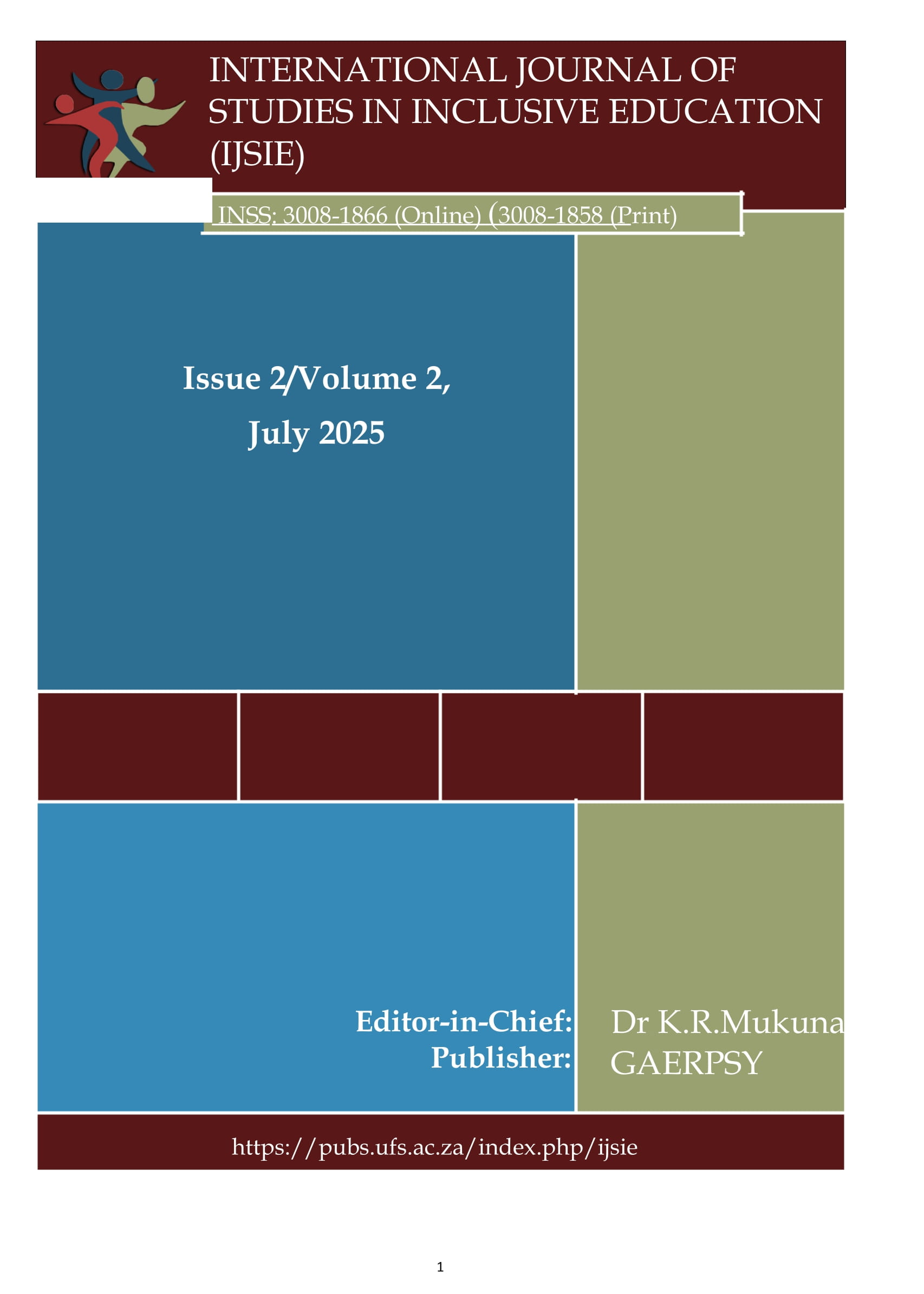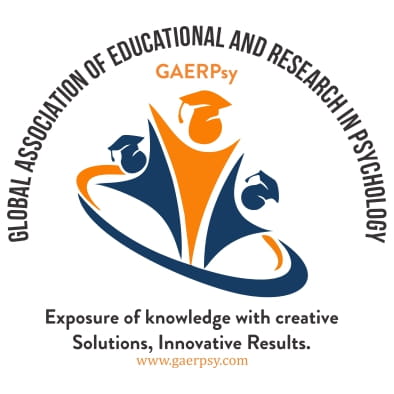Evaluating students' perceptions of factors contributing to alcohol abuse at a TVET college in the Tshwane district
DOI:
https://doi.org/10.38140/ijsie.v2i2.2007Keywords:
Alcohol abuse, Peer pressure, TVET College, Stress, Students' perceptionsAbstract
The abuse of alcohol by young people has become widespread across the world. Previous studies confirmed that the excessive use of alcohol by students affects their health and academic results in South Africa. This study evaluates the students’ perceptions of factors contributing to alcohol abuse. It employed a quantitative approach and cross-sectional design. It used a structured questionnaire to collect data. Three hundred and forty-four students were selected at a TVET college in the Tshwane District. Descriptive and inferential analyses, including factor analyses, correlation, and regression analyses, were used to analyse data. The findings revealed that the students perceived access to cheap alcohol could contribute to alcohol abuse. Stress and peer pressure could lead to alcohol abuse. This study recommended social support programmes to assist students in reducing alcohol abuse in communities.
References
American Psychiatric Association (APA). (2013). Diagnostic and statistical manual of mental disorders (DSM-5®). American Psychiatric Pub.
Aware.org. (n.d.) Underage Drinking. [video]. Retrieved from https://awarefreewifi.co.za/
Blumberg, B., Cooper, D. R., & Schindler, P. S. (2011). Business research methods. (11th ed.). Boston: McGraw-Hill.
Branstetter, S. A., Low, S., & W. Furman, W. (2011). The influence of parents and friends on adolescent substance use: A multidimensional approach. Journal of substance use, 16(2), 150-160. https://doi.org/10.3109/14659891.2010.519421
de Vos, A. S., Strydom, H., Fouche, C. B., & Delport, C. S. L. (2002). Research at the grassroots: For the social sciences and human services professions. Pretoria: van Schaik Publishers.
Ferreira-Borges, C., Parry, C. D., & Babor, T. F. (2016). Harmful use of alcohol: a shadow over sub-Saharan Africa in need of workable solutions. International journal of environmental research and public health, 14(4), 346. https://doi/.org/10.3390/ijerph14040346
Field, A. (2018). Discovering statistics using IBM SPSS statistics (5th ed.). Newbury Park: SAGE.
Gravetter, F. J., & Forzano, L. B. (2012). Research Methods for the Behavioral Sciences (4th ed.). Belmont, CA: Wadsworth.
Kouvonen, A., & Lintonen, T. (2002). Adolescent part-time work and heavy drinking in Finland. Addiction (Abingdon, England), 97(3), 311–318. https://doi.org/10.1046/j.1360-0443.2002.00091.x
Lawinsider. (n.d.). In Lawinsider. Retrieved from https://www.lawinsider.com/dictionary/alcohol-abuse
Letsela, L., Weiner, R., Gafos, M., & Fritz, K. (2019). Alcohol availability, marketing, and sexual health risk amongst urban and rural youth in South Africa. AIDS and Behavior, 23(1), 175-189. https://doi.org/10.1007/s10461-018-2250-y
Matzopoulos, R. G., Truen, S., Bowman, B., & Corrigall, J. (2014). The cost of harmful alcohol use in South Africa. The South African Medical Journal, 04(2), 127-132. https://doi.org/10.7196/SAMJ.7644
Mohasoa, I., & Mokoena, S. (2017). Factors Contributing to Substance (Drug) Abuse among Male Adolescents in South African Public Secondary Schools. International Journal of Social Sciences and Humanity Studies, 9(1), 108-120.
Monteiro, M. G., Babor, T. F., Jernigan, D., & Brookes, C. (2017). Alcohol marketing regulation: From research to public policy. Addiction (Abingdon, England), 112(1), 3–6. https://doi.org/10.1111/add.13660
Nieuwenhuis, J. (2019). Qualitative research designs and data-gathering techniques. In K. Maree (ed.), First steps in research (3rd ed.) (pp. 79-116). Pretoria: Van Schaik Publishers.
Paltzer, J., Okafor, C., Chiluba, B., & Taylor, K. P. (2021). Cross-sectional study of alcohol preferences and expenditures on food insecurity between urban and rural settings in Zambia. African Journal of Drug and Alcohol Studies, 20(1), 53-64. https://doi.org/10.4314/ajdas.v20i1.4
Peltzer, K., Davids, A., & Njuho, P. (2011). Alcohol use and problem drinking in South Africa: findings from a national population-based survey. African Journal of Psychiatry, 14(1), 30-37. https://doi.org/10.4314/ajpsy.v14i1.65466
Ramsoomar, L., & Morojele, N. K. (2012). Trends in alcohol prevalence, age of initiation, and association with alcohol-related harm among South African youth: Implications for policy. South African Medical Journal, 102(7), 609-612.
Schneider, M., Norman, R., Parry, C., Bradshaw, D., & Pluddemann, A., (2007). Estimating the burden of disease attributable to alcohol use in South Africa in 2000. South African medical journal, 97(8), 664-672.
Shield, K. D., Rylett, M., Gmel, G., Gmel, G., Kehoe?Chan, T. A. K., & Rehm, J. (2013). Global alcohol exposure estimates by country, territory, and region for 2005-a contribution to the Comparative Risk Assessment for the 2010 Global Burden of Disease Study. Addiction, 108(5), 912–922.
Tejada, J. J., & Punzalan, J. R. B. (2012). On the misuse of Slovin’s formula. The Philippine Statistician, 61(1), 129-136.
Thobejane, T., & Raselekoane, R. (2017). Probing alcohol abuse amongst the youth of Musina community in Limpopo province of South Africa. Studies of Tribes and Tribals, 15(2), 94-102. https://doi.org/10.1080/0972639X.2017.1413799
Van Walbeek, C., & Blecher, M. (2014). The economics of alcohol use, misuse and policy in South Africa. Report Prepared for the World Health Organization South Africa Office. Retrieved from http://www.tobaccoecon.uct.ac.za/sites/default/files/image_tool/images/405/People/the economics-of-alcohol-policy-in-south-africa.pdf
World Health Organisation (WHO). (2014). Global status report on alcohol and health. Retrieved from http://www.who.int/substanceabuse/publications/global_status_report_2014_ove rview.pdf
Zawaira, F. (2009). The Burden of Alcohol Consumption in the African Region. World Health Organisation.
Additional Files
Published
How to Cite
Issue
Section
License
Copyright (c) 2025 Christian Kitumbi Wasso

This work is licensed under a Creative Commons Attribution-NonCommercial-NoDerivatives 4.0 International License.
All articles published by GAERPSY Publishing are under an Attribution-NonCommercial-NoDerivatives 4.0 International (CC BY-NC-ND 4.0) license, allowing author (s) to share copies and redistribute the material in any medium or format. The GAERPSY Publishing cannot revoke these freedoms if they follow the license terms:
• Attribution: Author (s) must give appropriate credit, provide a link to the license, and indicate if changes were made. Author (s) may do so reasonably but not in any way that suggests the licensor endorses his/her or thier use.
• NonCommercial: Author (s) may not use the material for commercial purposes.
• NoDerivatives: If author (s) remixes, transforms, or builds upon the material, he/she (they) may not distribute the modified material.
• No additional restrictions: Author (s) may not apply legal terms or technological measures that legally restrict others from doing anything the license permits.








